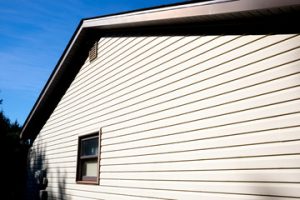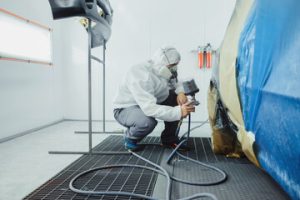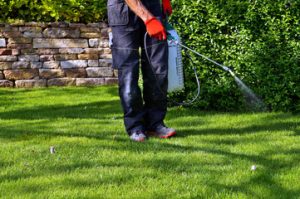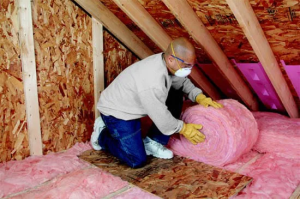
If you’re preparing to hire someone for your interior or exterior painting project, the right house painter can maximize your return on investment. It’s important to seek personal recommendations, verify credentials, and review their portfolios.
Effective communication and professionalism are also key indicators of a quality Modesto House Painters. This article will cover seven pivotal tips to help you choose the right professional for your home painting project.
Experience
Choosing the right residential house painter for your project can make the difference between a happy home improvement experience and a frustrating one. Thoroughly vetting recommendations, finding out about licensing and insurance, and establishing clear communication can help you hire the right contractor. Ultimately, this will ensure that the painting job is done well and that your expectations are met.
Professional painters have years of hands-on experience and training under their belts. They understand how to prepare a surface for painting, are adept at the painting process, and know how to troubleshoot issues that might arise during the project. They also know how to protect your property, and they work efficiently while maintaining a neat and tidy workspace.
Start your search by asking friends and family for referrals, but don’t stop there. Check out online review platforms, community boards, and social media groups to get a more broader perspective of the contractor’s reputation and quality of work. Look for reviews that emphasize punctuality, reliability, and overall customer satisfaction.
If you’re still unsure, schedule appointments with three or more potential contractors. This will give you a chance to assess how they respond to your questions, and it will allow you to compare estimates. Be sure to have a detailed conversation with each painter about the scope of your project, including cost and timeline.
You should also ask the potential painters about their experience. A good house painter should be able to provide you with references and testimonials from previous clients, as well as proof of licensing, insurance, and bonding. It’s important to choose a house painter with a history of providing high-quality workmanship and exceptional customer service. They should be willing to take the time to answer any of your questions, and they should offer a detailed contract that outlines the project scope and includes pricing and payment terms. They should also be able to provide you with a list of materials and supplies that will be used for the project. Lastly, they should be willing to meet with you at your home and assess the site.
Reputation
A house painting project can be a big investment, so it’s important to find a contractor with a solid reputation. The best way to do this is to get referrals from friends, neighbors, and colleagues who have hired a painting contractor in the past. You can also find reviews of local painting services on websites such as Google and Yelp. Pay close attention to the positive and negative feedback to help you make an informed decision about which painter to hire.
When evaluating potential house painters, it’s helpful to ask them to provide examples of their work. This will give you a good idea of their style and quality. It’s also a good idea to ask about their process and any extra steps they take to ensure the job is done correctly. For example, a quality painting service will power wash the surface and apply primer to prepare it for painting. They may also use high-quality materials to ensure long-lasting results.
Once you’ve compiled a list of potential painters, it’s important to compare their quotes. Be sure to ask each painter to break down the costs of materials, labor, and any other applicable fees. It’s also a good idea ask about their warranty policies. A reputable painter will be happy to answer any questions you have about their services and will offer competitive prices that reflect the quality of their work.
It’s important to remember that you usually get what you pay for, so don’t automatically choose the cheapest option. In most cases, the cheapest painter will be less experienced and may not have the proper licensing and insurance required by law. In addition, the quality of the work will suffer if they cut corners to save time or money. A reputable painter will be upfront about their pricing and will provide you with a detailed quote that includes an outline of all services provided. They should also be punctual when arriving for their initial consultations and quote meetings. This is a sign of professionalism and respect for their clients’ time. It’s also a reflection of how the painter will treat their crew on the job site.
Licensing
Once you’ve compiled a list of potential candidates, make sure to check their licensing. This ensures that they are legally allowed to operate and perform house painting jobs in your area. It also demonstrates that they have passed a background check and have liability insurance, which will protect you from any damages that may occur while they are working on your home. It’s also important to consider how long a house painter has been in business. A long-established company is more likely to have solidified a good reputation and built up valuable experience over the years.
Another crucial factor is customer reviews. You should ask for references from previous clients and read online reviews to see what other homeowners have to say about the work performed by each candidate. A professional house painter will be happy to provide you with these references and testimonials, as they take pride in their work and want to maintain a positive reputation.
When evaluating reviews, look for comments that indicate how well the house painter communicated with the homeowner and listened to their concerns and expectations. These are key signs that the house painter will provide exceptional service and deliver high-quality results.
A quality house painter should also have a clear process in place for how they will complete the project. This should include a detailed quote that breaks down the scope of work, paint color choices, number of coats required, and other factors. It should also state how the quote was calculated, as this can help you compare quotes and find the best value for your money.
Once you’ve selected the right candidate for your home paint job, ask for a written contract that includes all details of the work and specifies a start and completion date. It should also clearly outline any fees and payment methods. Avoid companies that refuse to provide a contract or are pushy during the sales process, as these are red flags that they don’t treat their customers with respect.
Insurance
A fresh coat of paint can transform the appearance of your home, boosting curb appeal and adding value. But it’s important to choose a professional with the right qualifications to ensure the job is done correctly. In addition to making sure your painting contractor has a valid license, you should also look for other qualities that will help you find the right match.
Start by asking friends, family members and neighbors for recommendations. If they’ve worked with a house painting company in the past, ask them for testimonials and pictures of their work. This will give you a good idea of what to expect.
Once you’ve made a list of potential candidates, make sure each one is insured. Check their insurance policies to see if they have general liability or workers’ compensation insurance. This will protect you from any unexpected costs if the painters are injured on the job or damage your property.
It’s also a good idea to ask the painting contractors what type of materials they use. Look for reputable brands, such as Sherman Williams and Benjamin Moore, as these paints are known to hold up well over time and resist the elements. Avoid companies that use cheap, knock-off brands, which may fade or chip quickly.
In addition to checking for proper licensing, you should also ask if the painter offers a warranty on their work. This will help to reassure you that the painters stand by their work and will be happy to address any concerns you might have. It’s also a good idea to get everything in writing, so you have a record of the details.
While finding the right house painter for your project may take some time, it’s worth the effort. By taking the time to evaluate each candidate’s qualifications and experience, you can be confident that you’ll end up with a high-quality finished product. With a little research, you’ll be able to find the perfect house painter to tackle your next project. With the right team of painters, you’ll be enjoying your home’s new look in no time.








